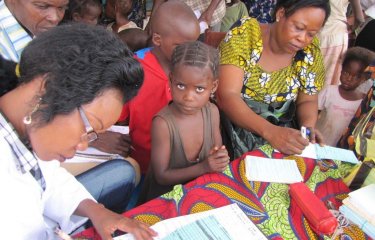To accelerate momentum in the global fight against hepatitis B, expanding testing and treatment services in resource-limited countries is crucial, especially in sub-Saharan Africa. But determining which patients are eligible for treatment is a complex process and requires tests that are not widely accessible in these regions. Should all people infected with the virus be treated without assessing their eligibility for treatment (a "Treat All" strategy)? Using a mathematical model, scientists determined that an alternative combining simple diagnostic tests is cost-effective and sufficiently effective in assessing whether a patient should receive treatment.
Hepatitis B is a viral liver disease that affects nearly 300 million people worldwide. The virus is generally transmitted from mother to child, through exposure to blood or during sexual activity.
Hepatitis B remains a major cause of liver cancer. Approximately 820,000 people with the virus die every year from cirrhosis or liver cancer. But the majority of those infected with hepatitis B virus (HBV) live a normal life and do not necessarily need antiviral treatment. WHO estimates that between 12 and 25% of patients with chronic hepatitis B infection will need to be treated at some point.
"The problem is that it is hard to know who can really benefit from antiviral treatment," explains Yusuke Shimakawa, a scientist in the Institut Pasteur's Epidemiology of Emerging Diseases Unit. "There are several protocols to determine who should begin treatment, but they are sometimes difficult to apply, especially as the disease mainly affects African and Asian countries, where there is very limited access to diagnostic tools."
A particular focus on resource-limited countries
In low-income countries, between 5 and 8% of adults carry HBV without any symptoms, after being infected in childhood. But some go on to develop chronic conditions as an adult (especially liver conditions) that can lead to cancer. Such diseases are often detected at a late stage and result in premature death, and there is a need for better surveillance and treatment for the general population in these countries.
Some scientists and patient organizations recommend universal treatment – a "Treat All" strategy, like for HIV – to remove the need to assess treatment eligibility. But this raises several problems:
- the potential cost,
- the fact that treatment needs to be taken every day for life,
- the difficulty in ensuring long-term access to treatment (especially in developing countries).
This is why a team from the Institut Pasteur, in collaboration with other scientists, turned their attention to the situation in West Africa, a highly endemic region where hepatitis B is in constant circulation. The aim was to facilitate the identification of individuals eligible for antiviral treatment.
Access to diagnostic tests like quantification of HBV viral load or FibroScan® is limited in low-resource countries. The Institut Pasteur team developed a mathematical model: "Our study was the first mathematical model to compare the different strategies for assessing eligibility to antiviral treatment in The Gambia in terms of effectiveness and cost, to determine whether or not a patient with hepatitis B should be prescribed treatment. It was the first time that an analysis of this kind had been carried out in a low-income country," explains Liem Binh Luong Nguye, first author of the study.
Using mathematics to identify a screening model for HBV
"The results of our mathematical model suggest that the most suitable approach in low-income countries is a targeted, simplified strategy using a well-known diagnostic test known as TREAT-B," reports the scientist.
The TREAT-B test combines the hepatitis B e antigen (HBeAg) and alanine aminotransferase. It can perform just as well as much more "sophisticated" tests in reducing cases of cirrhosis and hepatocellular carcinoma (a form of cancer), and it is much more affordable – the five-year budget is half as much as the budget required for a Treat All strategy.
The study shows that a Treat All strategy would be too expensive for a low-income country like Gambia and that its efficacy would depend strongly on:
- the acceptability of such a strategy for the population;
- the quality of life of people receiving treatment.
Accessibility to diagnosis in all countries is crucial for early treatment to prevent the development of diseases caused by chronic hepatitis B. Determining the eligibility of a patient for treatment is therefore a key step in developing a prevention strategy.
------------------------------------------------------------------
This study comes under the Emerging Infectious Diseases priority scientific area in the Institut Pasteur's 2019-2023 Strategic Plan.
------------------------------------------------------------------
Source
Treat All versus targeted strategies to select HBV-infected people for antiviral therapy in The Gambia, west Africa: a cost-effectiveness analysis, the Lancet, November 24, 2023.






